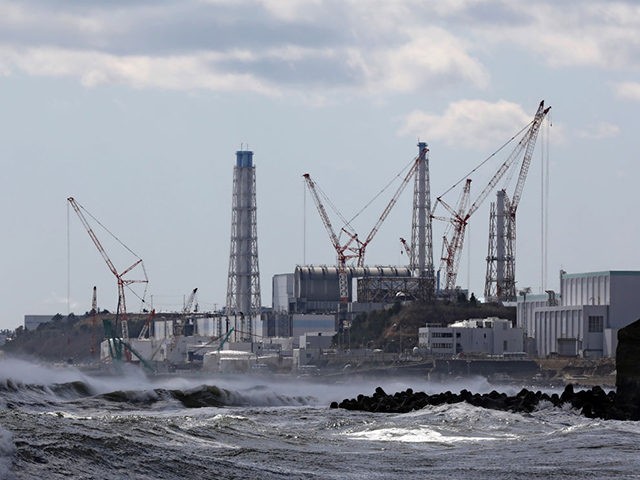The Japanese government is moving forward with plans to release contaminated water from the Fukushima nuclear power plant into the Pacific Ocean, local media outlets reported on Friday.
The Fukushima power plant experienced a triple meltdown in March 2011 after a magnitude-9.0 earthquake and tsunami devastated the area surrounding the plant, located in central Japan on the island of Honshu’s eastern coast.
Water used to cool molten nuclear fuel from the 2011 accident has been stored in tanks on the plant’s premises since then.
Before the water is stored, “Tokyo Electric Power Co. [TEPCO], the operator of the plant, treats the contaminated water using equipment called advanced liquid processing systems, or ALPS,” according to Japan’s Asahi Shimbun.
“[A]bout 1.2 million tons of processed water is being stored in tanks [currently] and TEPCO has estimated that tank capacity will be reached by the summer of 2022 even under the current plan to build more tanks,” the newspaper noted. “Because about two years is needed to construct the necessary equipment to dispose of the contaminated water and to pass screening by the Nuclear Regulation Authority, a decision on disposal of the water was expected by this summer.”
Japan’s “central government is likely to hold a meeting of relevant Cabinet ministers before the end of October to make a formal decision on the dumping,” sources allegedly told the Asahi Shimbun.
Japan’s Economy, Trade, and Industry Minister Kajiyama Hiroshi seemed to support this claim on Friday. According to NHK, Japan’s national broadcaster, Kajiyama told reporters that “work to consider various opinions and reach a conclusion” on the nuclear waste disposal “is now underway.”
He added that “the government will conduct further discussions and come up with a conclusion in a responsible manner,” but that “specific timing has yet to be decided.”
Japan’s economic ministry organized a “subcommittee of experts” several months ago to compile a proposal for the contaminated water’s disposal, according to the Asahi Shimbun. This panel said in February that “two realistic alternatives were to dump the water into the ocean or release it into the atmosphere. The panel added that dumping the water into the ocean was the method that could be implemented with certainty.”
The Japanese government “plans to use ALPS for a second processing to lower levels of all radioactive materials except for tritium, a mildly radioactive isotope of hydrogen, under legal standards” before dumping the water into the ocean, according to the report. The government says it will dilute the contaminated water with seawater to lower tritium levels to below legal standards.
Tokyo says it plans to monitor the environmental effects on the ocean off Fukushima’s coast after the water is disposed of. The central government has vowed to disclose information about its findings.
Fukushima fishermen have strongly opposed the proposal to dump the contaminated water into the ocean, arguing that it will lower consumer confidence in the local catch and seriously threaten their livelihood. Japan’s national federation of fisheries cooperatives, JF Zengyoren, issued a statement in June saying it was “absolutely opposed” to any disposal method that did not receive full public acceptance. JF Zengyoren President Kishi Hiroshi met with Japanese Finance Minister Kajiyama Hiroshi to reiterate this opposition to the plan on October 15.



COMMENTS
Please let us know if you're having issues with commenting.